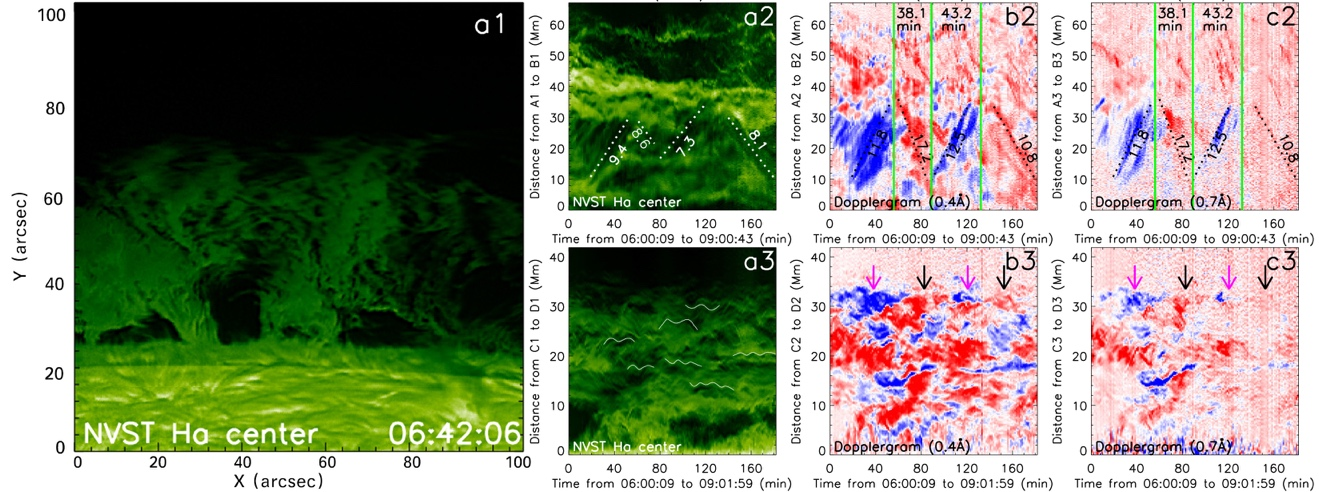
A recent study conducted by a collaborative research team from the Yunnan Astronomical Observatory of the Chinese Academy of Sciences, Nanjing University, and Yunnan University has shed new light on the dynamic evolution of solar prominences.
By integrating high-resolution observational data from the one-meter New Vacuum Solar Telescope (NVST) with spectral observations from NASA's Interface Region Imaging Spectrograph (IRIS) satellite, the team identified distinct dynamic features in different regions of solar prominences, providing new insights into the origin of counterstreaming flows within these structures. The findings were published in The Astrophysical Journal.
Solar prominences are striking features in the solar atmosphere, appearing as fence-like, cloud-like, flame-like, and arch-like structures. Larger ones consist of a central spine, multiple legs (called barbs), and a cavity (bubbles) at the base. These structures contain fine threads, with observations showing counterstreaming flows. Despite being identified in 1998, the origin of these flows remains unclear.
To address this long-standing question, the researchers leveraged high-resolution NVST observations of solar limb prominences to analyze their dynamic evolution in detail. The study revealed that the upper region of the prominence spine exhibits an 83-minute oscillation, while the middle region displays pronounced counterstreaming flows with velocities ranging from 10 to 20 kilometers per second. Additionally, the lower region of the spine experiences intermittent material injections.
These material injections occur through two distinct mechanisms: one involves the upward motion of plumes that deposit material into the lower spine, while the other is driven by magnetic tornadoes originating from the prominence legs, which transport material into the lower region. The interplay between these oscillations and material flows results in the pervasive counterstreaming motion observed throughout the prominence.
This study was supported by the National Natural Science Foundation of China’s Distinguished Young Scholar Fund, the Strategic Priority Research Program of the Chinese Academy of Sciences, and the Yunnan Key Laboratory of Solar Physics and Space Science.

Figure 1: (a1): The prominence observed by the NVST. (a2-c2): the longitudinal oscillation of the middle part of the prominence. (a3-c3):the transverse oscillation of the prominence spine. (Image by Prof. YAN Xiaoli's group)

86-10-68597521 (day)
86-10-68597289 (night)

52 Sanlihe Rd., Xicheng District,
Beijing, China (100864)

